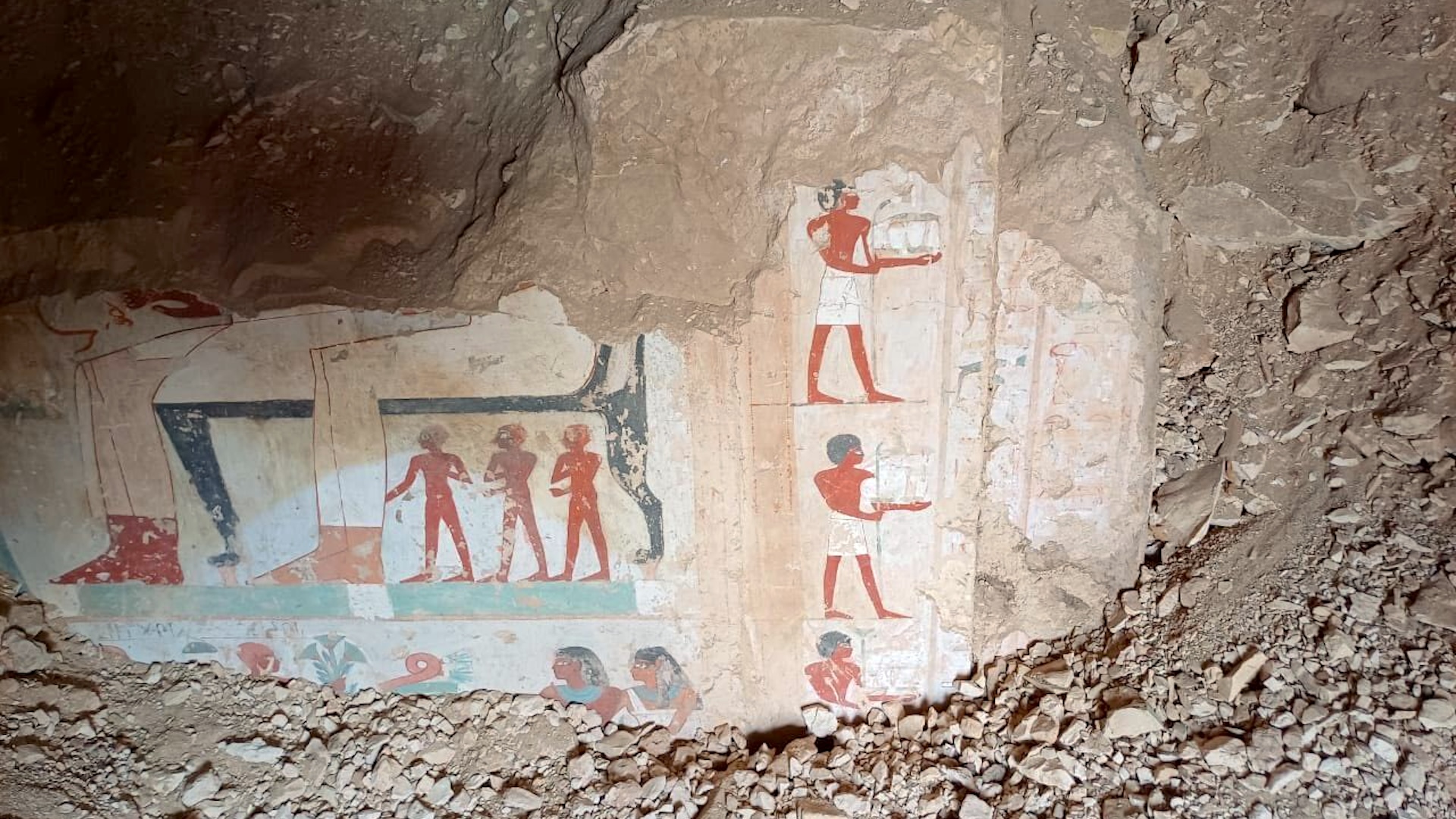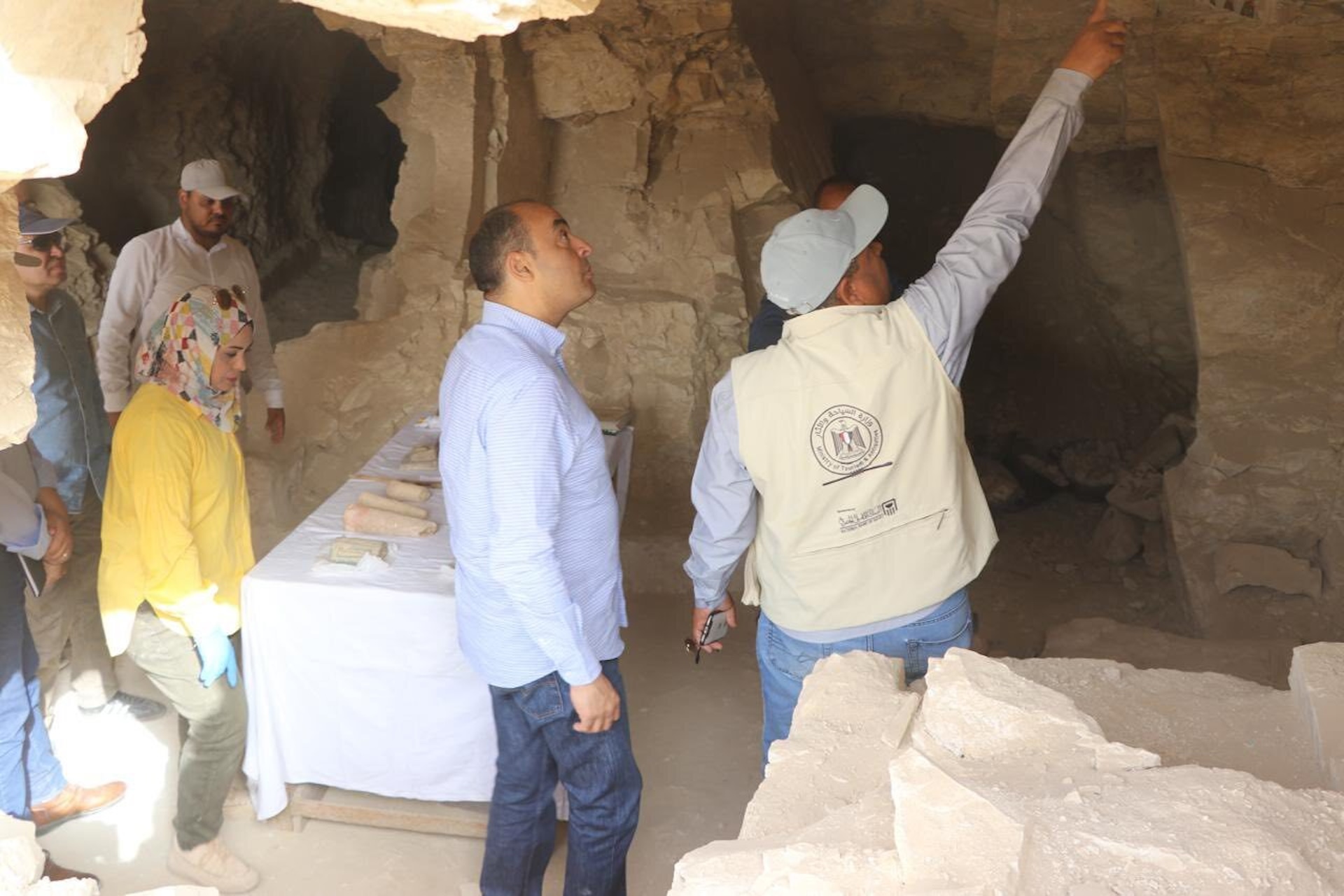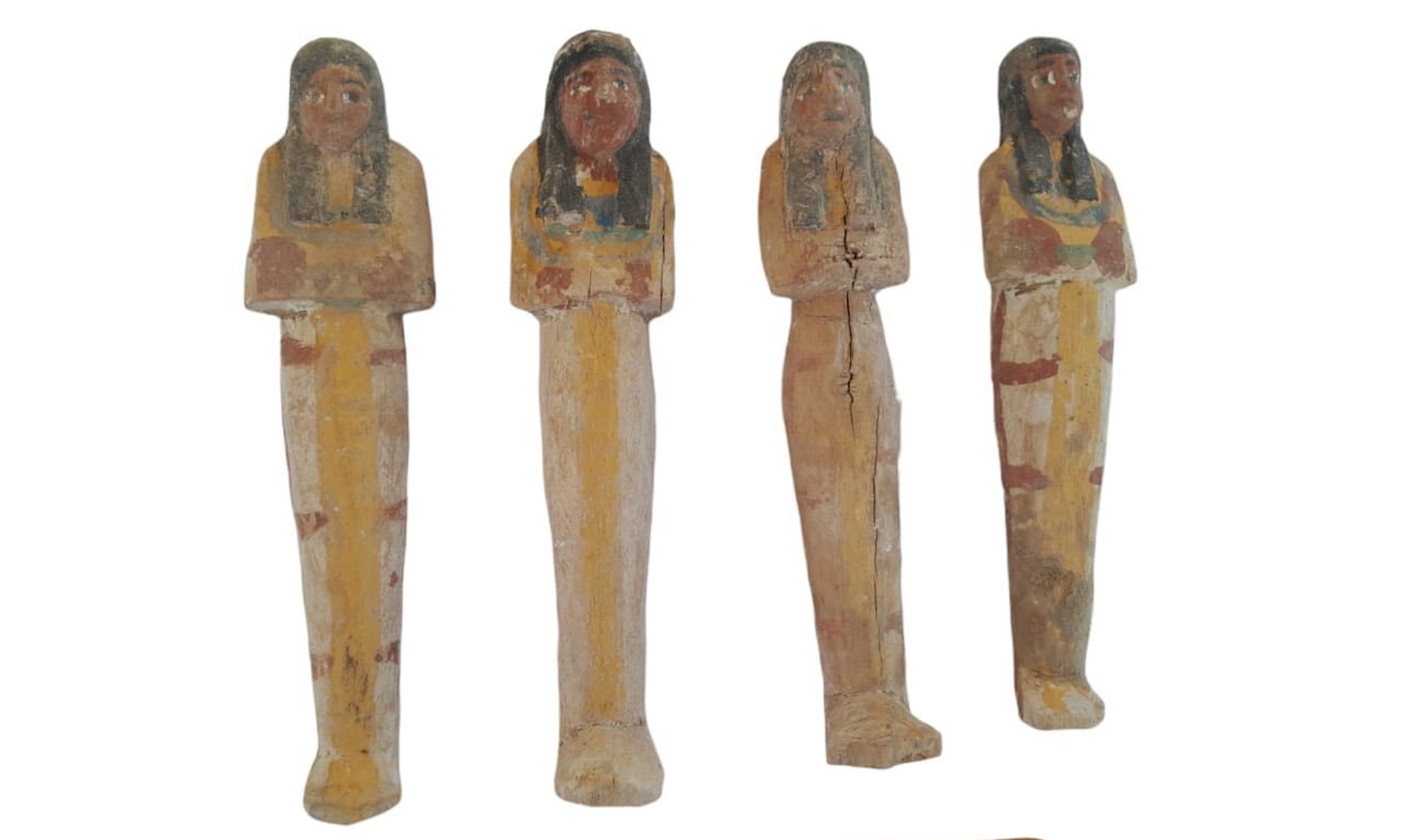3 ancient Egyptian tombs dating to the New Kingdom discovered near Luxor
Three ancient Egyptians were buried in remarkable tombs with courtyards in a necropolis reserved for important people.

Archaeologists in Egypt have discovered three New Kingdom tombs dating to more than 3,000 years ago. The burials were found within a cemetery now known as Dra Abu el-Naga, which is near modern-day Luxor (ancient Thebes).
The three deceased individuals, all men, each held important roles in ancient Egypt's temples and grain silos. So it's no surprise they were buried at the Dra Abu el-Naga cemetery, which is located near the Nile and is a necropolis for important non-royal people.
One of the tombs belongs to a man named "Amun-Em-Ipet" who served in a temple or estate that was dedicated to Amun, a god associated with ancient Thebes, Egypt's Ministry of Tourism and Antiquities said in a translated statement. The man lived during the 19th dynasty (circa 1295 to 1186 B.C.), a time when Egypt controlled an empire that stretched from Syria to Sudan.
The tomb contains a small courtyard, a hallway and a burial chamber. The surviving wall paintings depict banquets, funerary offerings and a funerary procession. At a later time, his tomb was re-occupied by other individuals and another hallway was built.
The two other tombs date to the early part of the 18th dynasty (circa 1550 to 1295 B.C.). One is of a man named Baki, who was a supervisor of grain silos. His tomb has a corridor-shaped courtyard that connects to a second courtyard, which in turn has an entrance that leads to an unfinished chapel with a burial shaft.
The other early 18th-dynasty tomb belongs to a man named "Es," who had a number of different titles that indicate he was a scribe and a supervisor in a temple of Amun. The tomb has an entrance hall, a small courtyard and a series of unfinished chambers along with a burial shaft.
Related: Archaeologists unearth tree-lined walkway that led to ancient Egyptian fortress in Sinai Desert
Get the world’s most fascinating discoveries delivered straight to your inbox.

The interior of one of the tombs found near Luxor.

Shabtis found in the tombs. The ancient Egyptians believed that shabtis would work for the deceased in the afterlife.
The fact that all three tombs have courtyards is not unusual.
"Courtyards are common elements of the New Kingdom tombs of the non-royal Theban necropolis, and they are present throughout Dra Abu el-Naga," Katherine Slinger, a lecturer in Egyptian archaeology at the University of Manchester in the U.K. who was not involved with the excavation, told Live Science in an email.
"These courtyards had a ritual purpose, particularly during the funeral of the deceased and necropolis festivals," and were sometimes shared with adjacent tombs, Slinger said. "These newly discovered courtyards may contain evidence of this ritual activity," she noted.
Felix Arnold, an archaeologist with the German Archaeological Institute who was not involved in the excavation, told Live Science in an email that "courtyards are typical elements of New Kingdom tombs. The study of these exterior elements of tomb precincts tend to be neglected [and] their careful study will offer new insights."
A team made up entirely of Egyptian archaeologists discovered the tombs, the statement noted. Excavations of the site are ongoing, as is analysis of the tombs.
Ancient Egypt quiz: Test your smarts about pyramids, hieroglyphs and King Tut

Owen Jarus is a regular contributor to Live Science who writes about archaeology and humans' past. He has also written for The Independent (UK), The Canadian Press (CP) and The Associated Press (AP), among others. Owen has a bachelor of arts degree from the University of Toronto and a journalism degree from Ryerson University.
You must confirm your public display name before commenting
Please logout and then login again, you will then be prompted to enter your display name.
